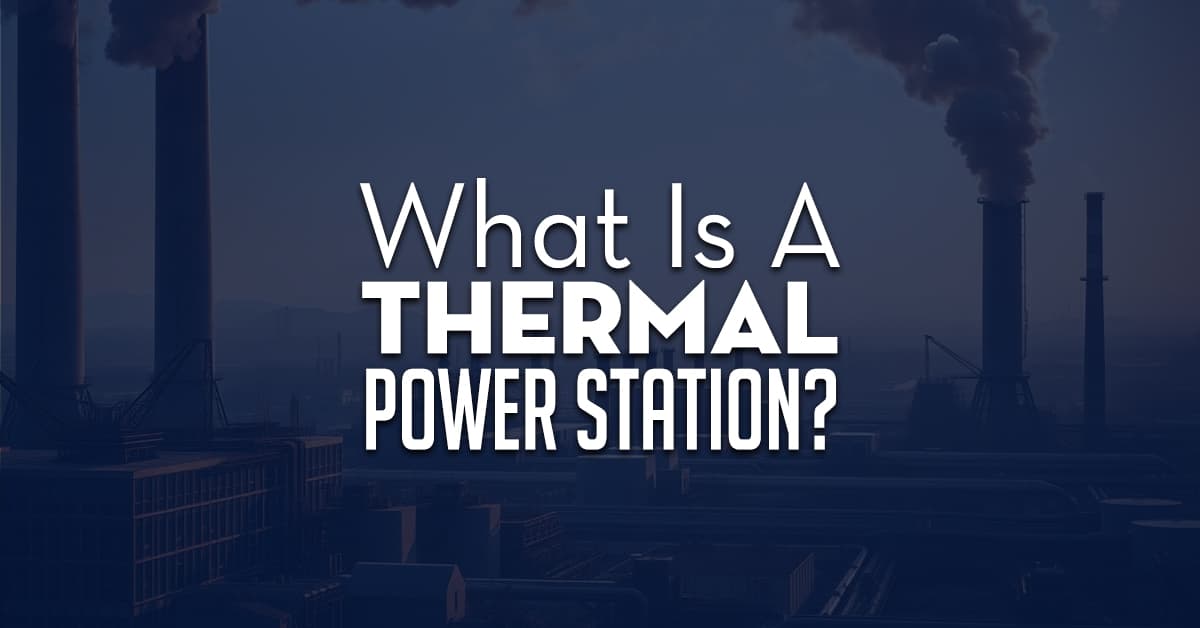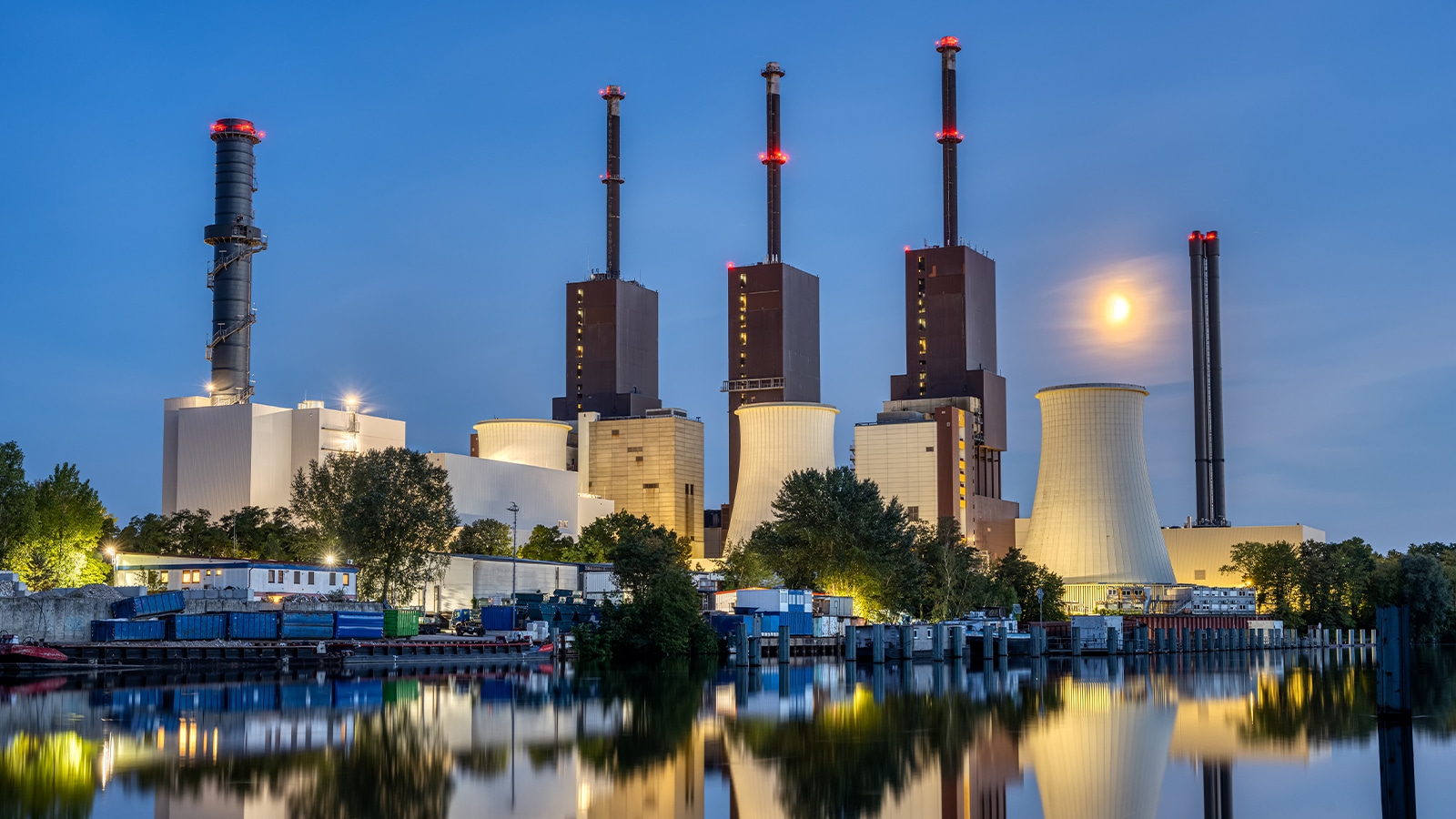Thermal power stations are essential for the global energy production, ensuring a steady supply of electricity to countless homes and businesses. These facilities convert heat energy from fuels like coal, natural gas, and nuclear materials into electric power. This process, known as thermal power generation, is fundamental to our energy landscape.
The core of a thermal power station is the heat engine, which converts thermal energy into mechanical energy. This mechanical energy powers an electrical generator, producing electricity for the power grid. The steam turbine, a prevalent heat engine, leverages high-pressure steam to rotate the generator.
The electricity generation process starts with fuel combustion in a boiler. The heat from this combustion turns water into steam, which is then channeled to the steam turbine. As the steam moves through the turbine blades, it spins the turbine, converting its kinetic energy into mechanical energy.
Thermal power stations are facilities that generate electricity by harnessing the heat energy from various sources. These include fossil fuels, nuclear fuel, or geothermal energy. These power plants rely on thermodynamics to convert heat into mechanical energy. This energy is then used to drive an electric generator and produce electricity.
A thermal power plant is a complex system that utilizes a thermodynamic power cycle. This cycle, like the Rankine cycle or Brayton cycle, transforms heat energy into electrical energy. The heat source, typically from burning fossil fuels or nuclear reactions, generates high-pressure steam in a boiler or pressure vessel.
The process of generating electricity in a thermal power station involves several key steps. First, the heat source, such as coal, natural gas, or nuclear fuel, heats water in a boiler or pressure vessel. This creates high-pressure steam.
This steam is then directed to a steam turbine. There, it expands and rotates the turbine blades. This conversion of steam’s thermal energy into mechanical energy is critical.
The steam turbine is connected to an electric generator. The generator consists of a rotor and a stator. As the turbine spins, it drives the generator’s rotor. This induces an electric current in the stator windings through electromagnetic induction.
This process generates electricity. The electricity is then transmitted to the power grid for distribution. It reaches homes, businesses, and industries.
In some thermal power plants, gas turbines are used instead of steam turbines. In these cases, the fuel is burned directly in the gas turbine. The hot exhaust gases drive the turbine, skipping the steam generation step.
The mechanical energy from the gas turbine powers the electric generator. This produces electricity.
Thermal power stations vary in their fuel sources and technologies, each contributing to the global energy demand. Dominating the sector, fossil fuel power stations are the cornerstone of electricity generation. This section delves into the primary categories of thermal power stations, highlighting their distinct features.
Coal-fired power stations, exemplified by the Nantong Power Station in China and Rooiwal Power Station in South Africa, employ coal combustion to produce steam. This steam drives a turbine, generating electricity. These conventional power stations are renowned for their steady operation, catering to base-load needs. Their inflexibility in adjusting output to demand fluctuations is a notable characteristic.
Natural Gas Power Stations
Natural gas power stations leverage gas turbines directly or in combined cycle configurations. In the latter, waste heat from gas turbines is harnessed to produce additional steam. This setup enables these plants to operate effectively in base-to-middle-load capacities, adapting to daily demand shifts. Combined cycle plants stand out for their high thermal efficiency, utilizing waste heat to drive a steam turbine.
Nuclear Power Stations
Nuclear power stations exploit the energy from nuclear reactions to produce heat. This heat generates steam, powering a turbine to produce electricity. Despite not relying on fossil fuels, nuclear power plants are classified as thermal power stations due to their heat-based electricity generation.
Geothermal Power Stations
Geothermal power stations, such as those in Iceland, harness steam or hot water from the Earth’s interior to generate electricity. These plants tap into geothermal reservoirs, providing a renewable energy source. They offer consistent output without the need for fossil fuels.
Other notable thermal power stations include solar thermal power stations, which concentrate solar energy to produce steam. Biomass-fueled power plants burn organic materials like wood chips or agricultural waste. Cogeneration plants, or combined heat and power (CHP) plants, produce both electricity and useful heat for industrial processes or district heating. These plants maximize overall efficiency by generating multiple outputs.
Components of a Thermal Power Station
A thermal power station’s efficiency hinges on several critical components. These include the steam-driven turbine, electric generator, boiler, and condenser. Each plays a vital role in the electricity generation process.
Turbine
The steam driven turbine is the core of a thermal power station. It transforms the thermal energy of high-pressure steam into mechanical energy. This transformation occurs through the rotation of its blades. As steam expands and loses pressure and temperature, it drives the connected electric generator to produce electricity.
Generator
The electric generator, in tandem with the steam turbine, converts mechanical energy into electrical energy. It consists of a rotor and stator, which induce an electric current. The generated electricity is then amplified by transformers for efficient transmission to the power grid.
Boiler
The boiler is essential in a thermal power station, generating high-pressure steam to drive the turbine. In coal-fired plants, pulverized coal combustion heats water to produce steam. The boiler system includes a superheater, heating the steam to around 540°C. This enhances the power generation process’s efficiency. An economizer preheats the feedwater before it enters the boiler, boosting the system’s overall efficiency.
Condenser
The condenser is critical for maintaining the thermal power station’s efficiency. It converts exhausted steam from the turbine back into water. This process uses cold water circulation to absorb the steam’s latent heat. The condensed water is then recirculated back into the boiler, completing the Rankine cycle and ensuring continuous power generation.
Efficiency of Thermal Power Stations
The efficiency of thermal power stations is a critical factor in determining their overall performance and environmental impact. By converting heat energy into electrical energy more effectively, power plants can reduce fuel consumption, lower operating costs, and decrease greenhouse gas emissions. In the United States, thermal power plants account for about 25% of greenhouse gas emissions, making efficiency improvements a key priority.
Factors Affecting Efficiency
Several factors influence the energy efficiency of thermal power stations, including the temperature and pressure of the steam, the design of the plant, and the type of fuel used. The Carnot efficiency, which describes the maximum theoretical efficiency of a heat engine, is determined by the temperature difference between the hot and cold reservoirs. In practice, power plant efficiency is calculated by dividing 3,412 Btu by the heat rate.
The efficiency of thermal power plants using fossil fuels in the United States has increased significantly over the past century, rising from about 4% in 1900 to 39% in 2023. These efficiency gains were achieved by reducing heat loss in three main energy conversions: boiler, turbine, and generator.
Improving Efficiency through Advanced Technologies
Advanced technologies play a critical role in improving the efficiency of thermal power stations. Supercritical and ultra-supercritical designs operate at higher temperatures and pressures, leading to improved heat rates and reduced fuel consumption. Combined cycle natural gas plants, which utilize waste heat from gas turbines to generate additional electricity, have achieved efficiencies exceeding 60%, compared to plateaued efficiencies in coal, oil, and nuclear plants.
Other strategies for improving efficiency include advanced reactor designs in nuclear power plants and cogeneration, which involves capturing and utilizing waste heat for industrial processes or district heating. By implementing these technologies and optimizing plant operations, thermal power stations can significantly reduce their environmental footprint while maintaining reliable electricity generation.
Environmental Impact of Thermal Power Stations
Thermal power stations, mainly those fueled by coal and natural gas, pose considerable environmental risks. The combustion of these fuels liberates greenhouse gases, with carbon dioxide (CO₂) being the primary contributor to climate change. Over the past century, CO₂ levels have surged by more than 30%, intensifying global warming.
Thermal power plants also emit air pollutants such as sulfur dioxide (SO₂), nitrogen oxides (NOₓ), particulate matter (PM), and mercury. These pollutants are responsible for acid rain, respiratory problems, and mercury accumulation in fish. Sulfur dioxide emissions, influenced by coal’s sulfur content (0.1-3.5%), can lead to acid rain. Nitrogen oxides, on the other hand, contribute to both acid rain and smog, posing threats to both the environment and human health.
Thermal power stations significantly strain water resources. They draw vast amounts of water from rivers, lakes, or aquifers for cooling and discharge heated water back into these sources. This thermal pollution escalates water temperatures, detrimental to aquatic life. The discharged water also contains heavy metals like arsenic, boron, and mercury, which can severely disrupt local ecosystems.
Ash from thermal power plants contains particulate matter (PM 2.5) that can exceed safe limits by 10-20 times in certain areas. This ash contaminates soil and water systems, rendering them unsuitable for agriculture and human consumption. The establishment of power plants on pristine land also disrupts habitats, alters soil composition, and diminishes vegetation, leading to long-term ecological alterations and possible wetland destruction.
To lessen the environmental footprint of thermal power stations, carbon capture and storage (CCS) technology offers a solution to reduce greenhouse gas emissions. Despite its high cost, CCS is not yet widely adopted. Many nations are shifting towards renewable energy to diminish the environmental impact of electricity generation. Regulatory frameworks, including environmental assessments, public hearings, and mitigation requirements, are in place to minimize the adverse effects of thermal power stations on local communities and ecosystems.
Role of Thermal Power Stations in Global Energy Production
Thermal power stations are vital for global electricity generation, contributing about 70% of the world’s power. These plants use coal, natural gas, oil, and nuclear energy to produce steam. This steam drives turbines, which are connected to generators, converting heat into electricity. This process meets a significant portion of global energy needs.
China, the United States, and India are the largest consumers of thermal power. Their large populations and industrial bases drive their energy demands. Coal and natural gas are their primary electricity sources. Yet, growing environmental concerns and the need to cut greenhouse gas emissions are pushing them towards cleaner energy options.
Largest Users of Thermal Power Globally
China, the world’s most populous nation and a leading manufacturer, has immense energy needs. Coal-fired plants have long been China’s electricity mainstay. Yet, it’s investing in wind and solar to diversify its energy and lower carbon emissions.
India, with its booming economy and large population, also heavily relies on thermal power. Coal is its main fuel, but it aims to boost renewable energy. The government is promoting solar and wind power to reduce fossil fuel use.
Thermal Power Production in the United States
The U.S. energy scene has changed significantly. Natural gas now leads electricity generation, thanks to its abundance and lower emissions. The U.S. energy mix has shifted, with thermal power’s share dropping from 70% in 2011 to 60% in 2021. Renewable energy’s share has risen from 10% to 21% over the same period.
The move towards renewables is driven by technology, cost reductions, and growing environmental awareness. Many U.S. states have set renewable energy targets. This trend is expected to continue as the country aims to reduce its carbon footprint and fight climate change.
Conclusion
Thermal power stations have been the cornerstone of electricity generation globally, leveraging coal, natural gas, and nuclear energy to deliver consistent power. Yet, their environmental footprint, marked by greenhouse gas emissions and air pollution, has become a pressing issue amidst climate change. The transition towards cleaner, renewable energy sources like solar, wind, and hydropower is gaining momentum as nations aim to decrease their carbon footprint.
Despite the environmental hurdles, thermal power stations are projected to continue playing a vital role in the global energy landscape in the immediate future. Initiatives to enhance their efficiency, such as carbon capture and storage (CCS) and advanced turbine designs, are essential for mitigating their ecological impact. The integration of renewable energy into existing thermal power systems is also critical. It helps mitigate the variability of renewables and boosts grid stability.
Ensuring a sustainable energy trajectory necessitates the implementation of stringent environmental standards by governments and global forums like the Conference of the Parties (CoP). This push for cleaner technologies and fuels in thermal power generation is underway. Power plant operators are also embracing sustainable practices, including efficient water management, responsible waste disposal, and eco-friendly mining methods. As the world transitions towards a low-carbon future, achieving a harmonious balance between electricity generation and environmental stewardship will be imperative to fulfill escalating global energy needs.
FAQ about Thermal Power Plants
What is a thermal power station?
A thermal power station, also referred to as a thermal power plant, transforms heat energy from various fuel sources (e.g., coal, natural gas, nuclear fuel) into electrical energy. This process involves the use of heat to produce steam. The steam then drives a steam turbine connected to an electric generator.
How do thermal power stations generate electricity?
Thermal power stations generate electricity by converting heat energy into mechanical energy through a thermodynamic power cycle, such as the Rankine or Brayton cycle. High-pressure steam, produced in a boiler or pressure vessel, drives a steam turbine. This turbine is connected to an electric generator.
What are the different types of thermal power stations?
There are various types of thermal power stations, including coal-fired, natural gas, nuclear, geothermal, solar thermal, and biomass-fueled plants. Coal-fired and natural gas power stations are commonly referred to as fossil fuel power stations.
What are the main components of a thermal power station?
The primary components of a thermal power station include the turbine, generator, boiler, and condenser. The steam produced in the boiler drives the turbine, which is connected to an electric generator. The condenser cools the turbine exhaust steam, converting it back into water for recirculation.
What factors affect the efficiency of a thermal power station?
Several factors influence the efficiency of a thermal power station. These include the steam’s temperature and pressure, the plant’s design, and the fuel type. Higher steam temperatures and pressures result in higher efficiencies, as described by the Carnot efficiency.
What is the environmental impact of thermal power stations?
Thermal power stations, mainly those burning fossil fuels, have significant environmental impacts. The combustion of coal, oil, and natural gas releases greenhouse gases (mainly CO2) that contribute to climate change. It also releases air pollutants such as sulfur oxides and nitrogen oxides, causing acid rain and respiratory diseases.
What role do thermal power stations play in global electricity generation?
Thermal power stations currently produce around 70% of the world’s electricity. China, the United States, and India are the largest users of thermal power globally. They heavily rely on coal and natural gas to meet their energy demands.
How is the share of thermal power in the U.S. energy mix changing?
In the United States, the share of thermal power in the energy mix has declined from 70% in 2011 to 60% in 2021. Over the same period, renewables have grown from 10% to 21%. Natural gas has recently overtaken coal as the largest source of electricity generation. Renewables and nuclear power also play significant roles.


